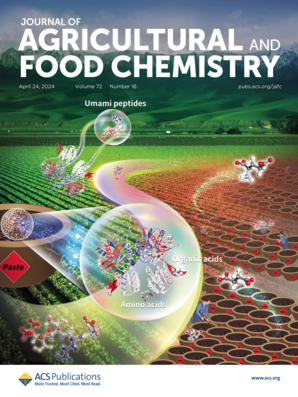Chlorogenic Acid Improves High-Fat Diet-Induced Skeletal Muscle Metabolic Disorders by Regulating Mitochondrial Function and Lactate Metabolism
IF 5.7
1区 农林科学
Q1 AGRICULTURE, MULTIDISCIPLINARY
引用次数: 0
Abstract
Mitochondria are pivotal in sustaining skeletal muscle and the systemic metabolic balance. Chlorogenic acid (CA) is a common dietary antioxidant known for its ability to modulate metabolic homeostasis. This study aimed to investigate the impact of CA on high-fat diet (HFD)-induced mitochondrial dysfunction and metabolic disorder in skeletal muscle. C57BL/6J mice fed with a HFD were treated with CA for 12 weeks. The study assessed the overall glycolipid metabolic status, exercise performance, muscle fiber type, and antioxidant capacity of skeletal muscle in HFD-fed mice treated with CA. Results showed that CA reduced fat accumulation, improved exercise capacity, and enhanced mitochondrial performance in HFD-fed mice. Untargeted metabolomics analysis revealed that lactate metabolism and mitochondrial fatty acid oxidation (FAO) responded positively to CA intervention. Molecular mechanisms demonstrated that CA intervention improved mitochondrial biogenesis and function, promoting FAO and oxidative phosphorylation in mitochondria and ultimately reducing fat deposition in skeletal muscle induced by HFD feeding. Mechanistically, CA decreased HFD-induced lactate production and protein lactylation in skeletal muscle, highlighting the importance of the LDHA-lactate axis in mitochondrial function improvement by CA. Therefore, this study provides additional insights supporting the potential of CA as a natural dietary supplement for metabolic syndrome and associated disorders.

求助全文
约1分钟内获得全文
求助全文
来源期刊
CiteScore
9.90
自引率
8.20%
发文量
1375
审稿时长
2.3 months
期刊介绍:
The Journal of Agricultural and Food Chemistry publishes high-quality, cutting edge original research representing complete studies and research advances dealing with the chemistry and biochemistry of agriculture and food. The Journal also encourages papers with chemistry and/or biochemistry as a major component combined with biological/sensory/nutritional/toxicological evaluation related to agriculture and/or food.

 求助内容:
求助内容: 应助结果提醒方式:
应助结果提醒方式:


